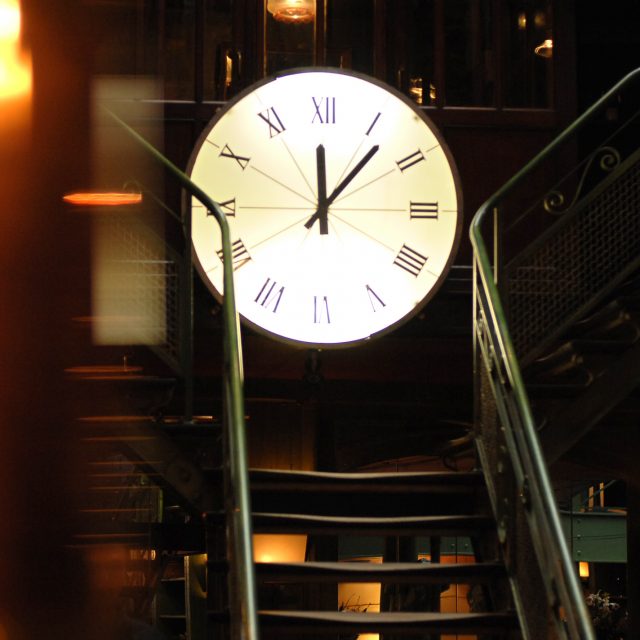Photo by Dustin Humes on Unsplash
Germany’s slowness in authorising the supply of Leopard 2 tanks to Ukraine was bad news for Ukraine, European security and Germany itself. But other Western leaders should not be too smug, writes Ian Bond.
Just days after Russia launched its full-scale assault on Ukraine in February 2022, Germany’s Chancellor Olaf Scholz described it as a “Zeitenwende” – a historical turning point. Germany’s eastern allies, whose warnings about the Russian threat had been ignored for many years, breathed a sigh of relief: finally, Berlin had ‘got it’. Almost a year later, many of those allies, not to mention Ukraine, are worried that the long-delayed decision to supply Leopard 2 tanks to Ukraine shows that Germany, or at least Scholz, has still not got it. They have reason to be concerned, but many other allies are not doing much better than the Germans: the West as a whole is still responding inadequately to the Russian threat.
To start with the tanks: to most observers of the conflict it had seemed obvious for months that Ukraine needed modern Western tanks to bolster its forces. German Leopard 2s, operated by more than a dozen European countries, were clearly the best option, but Scholz and parts of his SPD party still hesitated.
On January 25th, Scholz finally agreed. It is not clear whether he hesitated because he was worried that he did not have the support of the German public (a recent opinion poll showed almost equal numbers for and against supplying tanks to Ukraine); afraid of internal opposition in his SPD party; reluctant to go it alone without the US also supplying tanks, fearing that Russia might respond to German tanks in Ukraine by attacking NATO directly; or keen not to close the door on the possibility of better relations with Russia in future.
Whatever the explanation, Scholz’s delay caused damage in three areas, all of which will be hard to put right. First, it is likely to take some time before significant numbers of Leopard 2s reach the battlefield. Former Commander of the US Army in Europe General Ben Hodges estimates it will take 7-11 weeks to prepare tank crews. Training maintenance engineers will take significantly longer. Meanwhile, all the indications are that Russia held back some of the troops it mobilised last year for further training and is likely to mobilise more in preparation for a spring offensive. Ukraine will probably have to face that offensive before it can deploy all its new and more capable tanks, which will mean more casualties and increase the risk of losing ground.
Second, Germany’s hesitation will further entrench the divide between those who see a US presence as Europe’s only effective security guarantee and those who believe that Europe must take more responsibility for its own defence. The fact that Scholz only shifted gears when he knew that the US would also supply tanks, disregarding the prior offers of many European allies to do so, underlines how far Europe is from being willing or able to stand on its own feet. This divide is a worry, because although US president Joe Biden still seems able to rely on the support of Republicans in the Senate when it comes to helping Ukraine, Republicans in the House of Representatives include an increasing number of isolationists – and the House controls the purse-strings. Europeans may have to get used to the idea of doing more for themselves in future crises, but Germany does not yet seem ready for that.
Third, the delay will damage Germany itself. It will encourage Russia to believe that German resolve to support Ukraine can be broken. The Kremlin will exploit its connections in Germany – built up over many years of business and political ties – to encourage dissent over support for Ukraine and to promote division, including between the former German Democratic Republic and the rest of Germany. When Scholz announced to the Bundestag that Germany would supply Leopard 2s to Ukraine, an MP from the right-wing populist AfD (a party which is strong in the east, and has been supportive of Putin) immediately accused him of overthrowing the foundations of Germany’s post-war peace policy.
Germany’s defence industrial sector will also suffer. This is not the first time that strict German export controls have frustrated its partners: in 2019 the CER wrote about the problems this caused, and the need for a common EU arms export policy. Now countries that might otherwise have turned to Germany as a partner in developing new armaments may choose to exclude German content, for fear that Berlin will not allow them to use such weapons to defend their security interests as they see fit. US defence firms are likely to be the biggest beneficiaries.
Now that Scholz has – finally – done the right thing, he will be tempted to rest on his laurels, and other Western leaders will be tempted to pat themselves on the back for having done better than him. But none of them should be complacent. The two battalions of Leopard 2s – roughly a hundred tanks – provided by a coalition of Europeans and another 31 Abrams tanks from the US are certainly valuable to Ukraine, but they will not produce a decisive change on the battlefield, especially if they arrive when Russia is already on the offensive. Main battle tanks may not even be the most important weapons systems to supply at this point in the war: leading American military analyst Michael Kofman argued recently that what Ukraine most needed was more and better air defence – which a number of countries are already working to provide – and more artillery ammunition.
The West should start by worrying less about Putin escalating the conflict, and more about defining and pursuing its own interests. Putin’s ultimate objective is clear (though probably unattainable): he wants to remove Ukraine from the map as a sovereign state, leaving it at most with the kind of Potemkin statehood that the Ukrainian Soviet Socialist Republic had within the Soviet Union. Despite Western restraint, Putin has used more force when he has thought that it would help him to achieve his aims.

The Author, Ian Bond, is director of foreign policy at the Centre for European Reform




